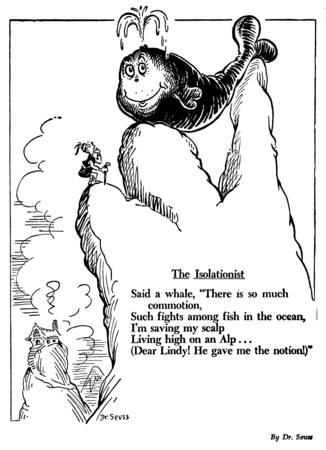Dr. Seuss After the Cartoons

The political cartoons Dr. Seuss drew during
World War II are key to making the Dr. Seuss
we know today. As Art Spiegelman says, we see
Dr. Seuss “develop his goofily surreal vision while
he delivers the ethical goods.” In the cartoons,
Seuss shows a glimpse of what his later books
would look like. Wacky animals, rhymes, and
nonsense words are all ways Dr. Seuss
communicated, both in his cartoons and
in his later books. Multiple characters from
the books originate in the cartoons.
[The Isolationist,"1941, UC San Diego Library.]
Dr. Seuss’ later books also have political messages that he communicates to the world. Prior to
World War II, Seuss’ stories didn’t present morals, but his later books do. For example, Horton
Hears a Who is an attack on racism. Yertle the Turtle is about totalitarianism. The Lorax is a call to
help the environment. Seuss’ cartoons changed the way he wrote his children’s books. The
messages in his stories have changed many Americans.